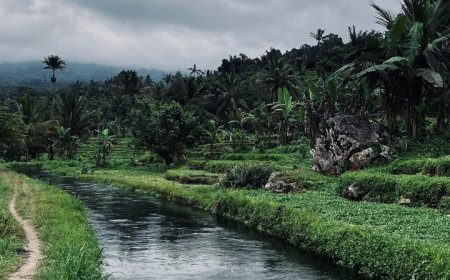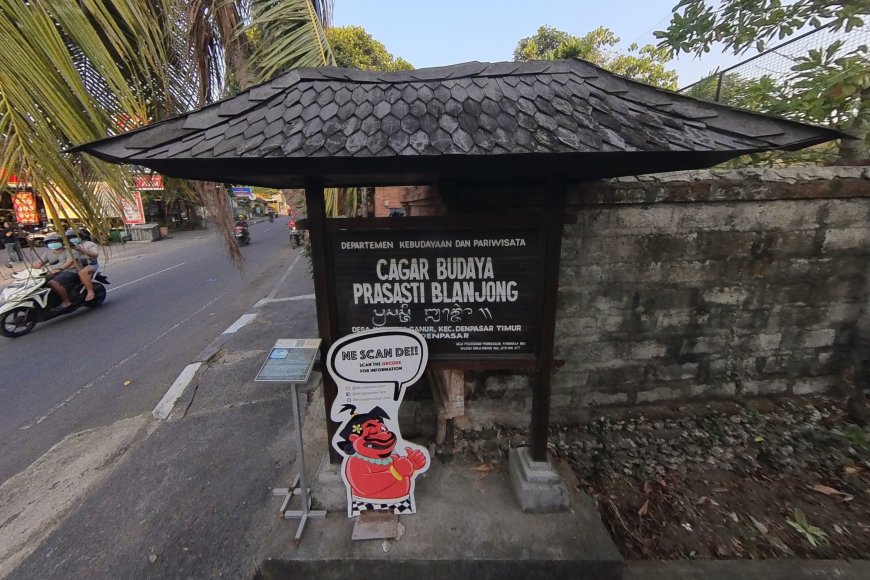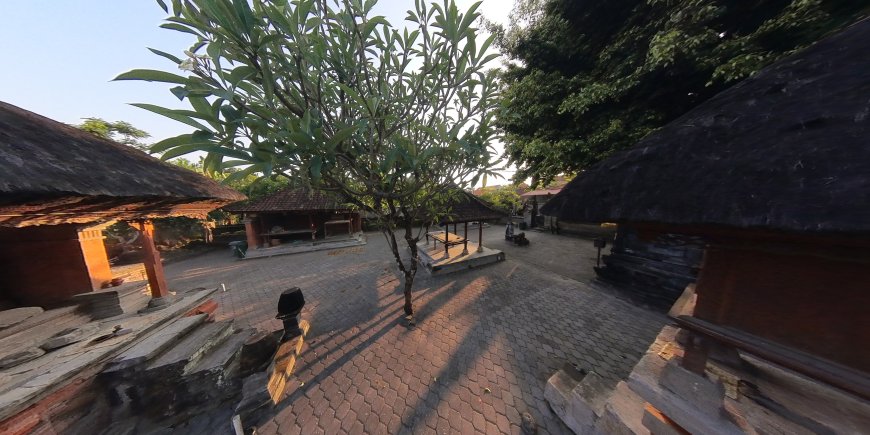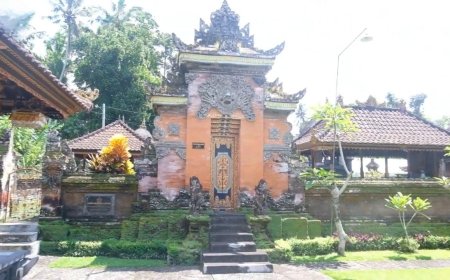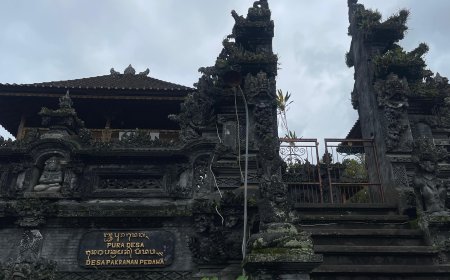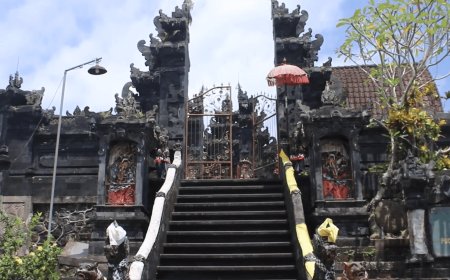Blanjong Temple and Inscription: Learning the History of Ancient Balinese Civilization Through Sacred Places
Blanjong Temple and Inscription is one of the tourist destinations located in Banjar Blanjong, Sanur Kauh Village, South Denpasar District, Denpasar City, Bali. Blanjong Temple and Inscription has an interesting history in it that attracts tourists to come visit. The existence of this temple and inscription is also evidence of the history of the cultural journey of the Balinese people in ancient times. The name Blanjong comes from the word "belahane" which means fragment and "ngenjung" which means fishing boat in Balinese. It is said that it began when there was a fragment of a Dutch ship that was stranded on the Sanur Coast, which is more precisely now in the Blanjong Coastal area and from that event the name blanjong was pinned.
The island of Bali, often referred to as the "Island of the Gods," is a place where spirituality and stunning natural beauty come together in remarkable harmony. One of the prominent characteristics of Bali is the many temples scattered throughout the island. Temples in Bali are known as places of worship for Hinduism and also Balinese culture that has been an integral part of Balinese life for centuries. There are many temples scattered in various parts of Bali, one of which is located in Banjar Blanjong, Sanur Kauh Village, South Denpasar District, Denpasar City, called Pura Blanjong. Precisely, this temple and stele is located approximately 4 km from Sanur Beach. If from Denpasar City, this tourist location is located approximately 10 km and can be reached in approximately 30 minutes.
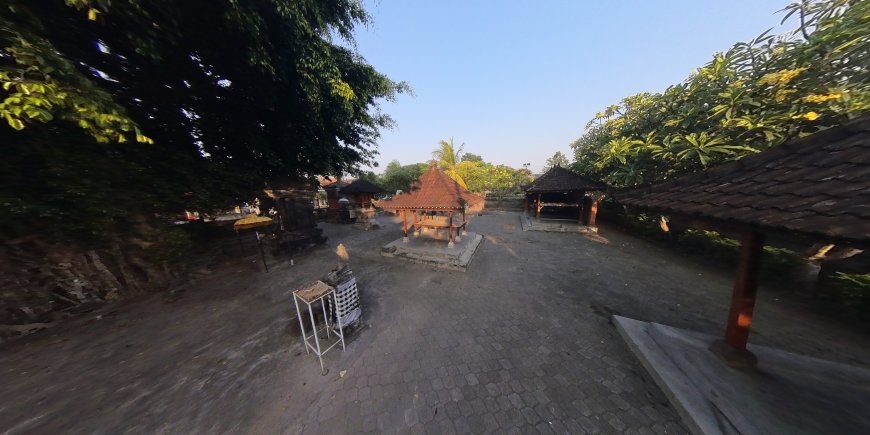
Blanjong Temple Area (Photo Source: Personal Collection)
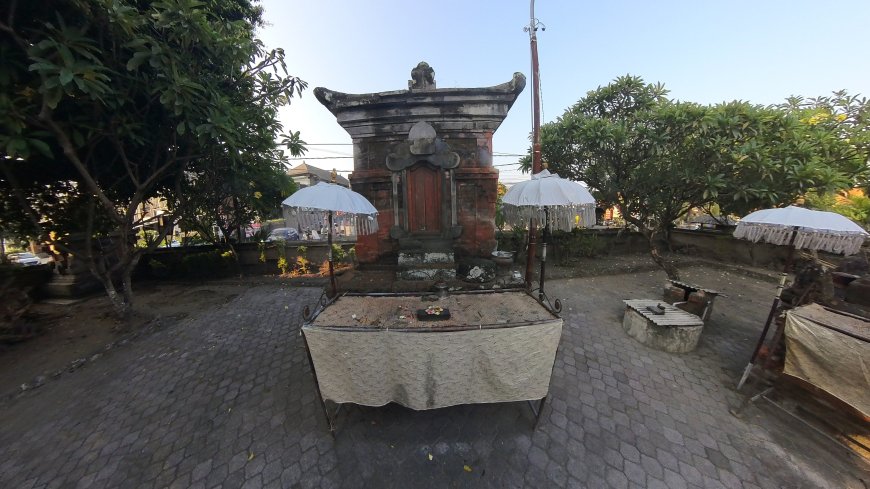
Pelinggih Dalem Blanjong in Blanjong Temple (Photo Source: Personal Collection)
Structurally, Blanjong Temple consists of one courtyard, namely the innards (utama mandala) and the outer courtyard directly in the form of a highway. In the back right corner of the temple is placed a stone stele monument (jaya stambha). The entrance to the inner courtyard is connected by a solid stone candi bentar. Pelinggih - pelinggih contained in this Blanjong Temple, namely Pelinggih Ratu Tuan, Pelinggih Jero Lantang Idung, Pelinggih Dalem Blanjong, Pelinggih Lingga Yoni, Pelinggih Jero Istri, and Pelinggih Padma as the main temple. This Blanjong Temple has 3 pengempon, namely from the Renon Pakraman Village, Cerancam Kesiman Village, and Lantang Idung Sukawati Village. The ceremony at Blanjong Temple falls on Pahing Kuningan, Soma, and Ulangkir. When the ceremony at Blanjong Temple takes place, all the Pratima melinggih in Pelinggih Padma.

Blanjong Inscription Area (Photo Source: Personal Collection)
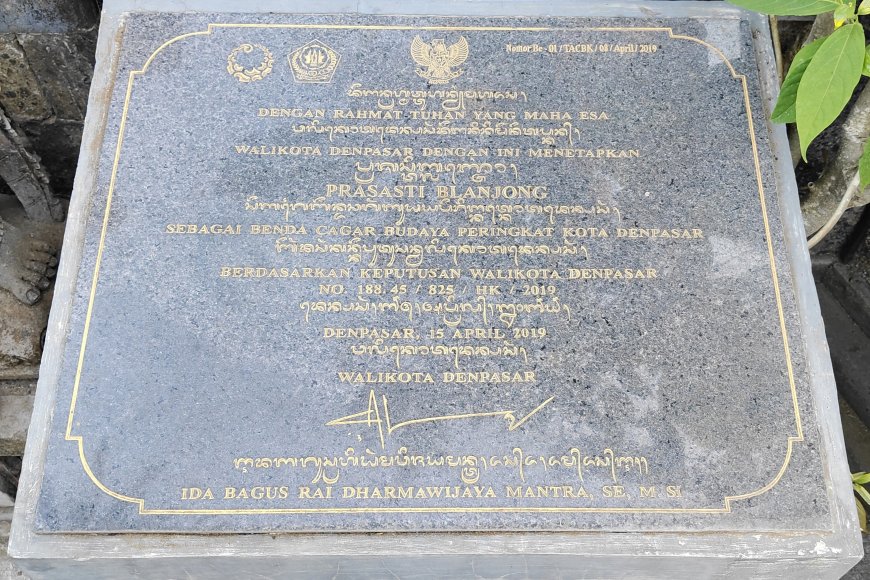
Plaque from Blanjong Inscription (Photo Source: Personal Collection)
Inside the Blanjong Temple there is also an inscription with the name Blanjong Inscription, which is evidence of the historical development of Balinese society in ancient times. The Blanjong inscription is an inscription that contains the oldest written history of the island of Bali. The inscription mentions the word Walidwipa, which is the name for the island of Bali. The Blanjong inscription is a cylindrical victory monument. This monument is a milestone of Sri Kesari Warmadewa's victory when leading Bali. The Blanjong inscription uses the Old Balinese language written using Pre Negari letters and Sansekerta Language written using Kawi letters. The Blanjong inscription was found near Banjar Blanjong, Sanur Kauh Village, South Denpasar District, Denpasar City, Bali. It is in the form of a stone pillar with a height of 177 cm, and a centerline of 62 cm.
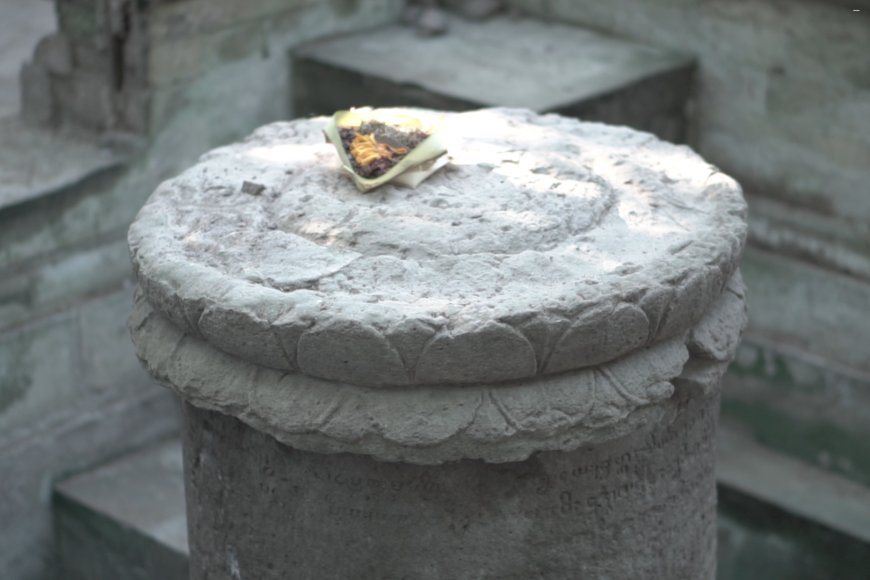
Blanjong Inscription Monument (Photo Source: Personal Collection)
"A king who has power throughout the world residing in Keratin Singhadwala named Cri Kesari has defeated his enemies in the Gurun and in Swal," thus the meaning of several lines of carving on one side of the Blanjong Inscription which is currently stored neatly in the Blanjong Temple. If you look at the meaning conveyed, it is clear that the inscription is one of the relics of the ancient Balinese Kingdom that illustrates the greatness and fame of the king. Historical researchers call this inscription a victory monument. The king in question, Sri Kesari Warmadewa, who reigned in the year Candrasangkala, depicts the year caka 835 or 913 AC. Sri Kesari Warmadewa was the founder of the Warmadewa Dynasty that once ruled Bali.
Sri Kesari Warmadewa means His Majesty the Protector of the Singha Kingdom also known as Dalem Selonding, came to Bali in the late 9th or early 10th century. He came from Srivijaya (Sumatra) whose predecessors had conquered Tarumanegara and the Kingdom of Kalingga on the north coast of Central Java (Semarang). The king's prowess is described in the Blanjong Inscription or victory monument. The inscription explains that the king had successfully conquered Gurun, which is the Nusa Penida region, and Swal, which means Ketewel Beach. This victory is what made the inscription made of solid stone and in the form of a stone pillar.
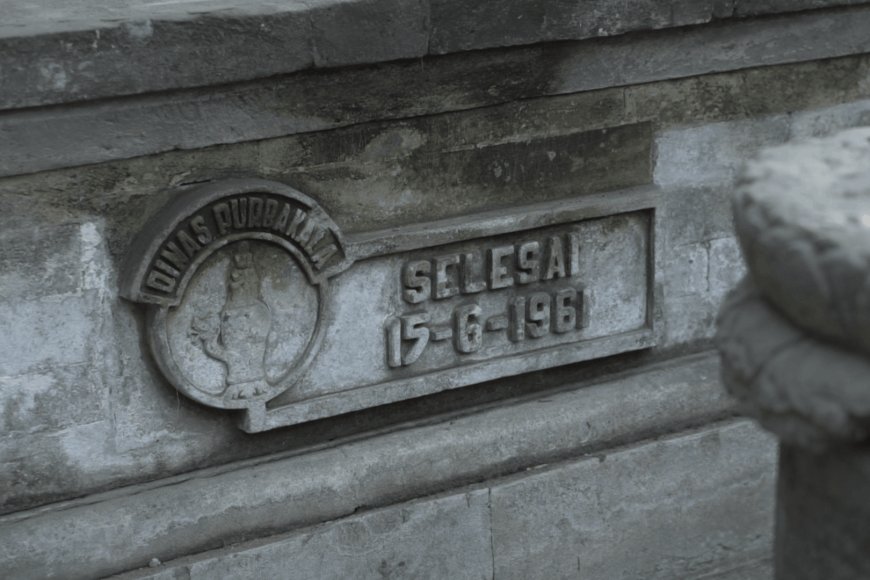
Detail of Blanjong Inscription (Photo Source: Personal Collection)
Upon closer examination, the Blanjong inscription itself is divided into two sides. On the northwest side, there are 6 lines of writing, using Pre Negari letters commonly used in North India and Old Balinese. The southeast side is written with 13 lines of writing, using Kawi letters and Sansekerta language. The finding of this inscription is also unique because usually similar heirlooms only use one language and letter. The use of two languages and two alphabets indicates the existence of proficiency and sufficient knowledge of the community during the 10th century Sri Kesari Warmadewa Kingdom. Another specialty is the use of a cross system in writing letters and languages. The Sanskrit language is written in Kawi letters, while the Old Balinese language is written in Pre Negari letters.
To experience the virtual exploration of the Blanjong Temple and Inscription more clearly, please click the "Click Here To See More" button.




















